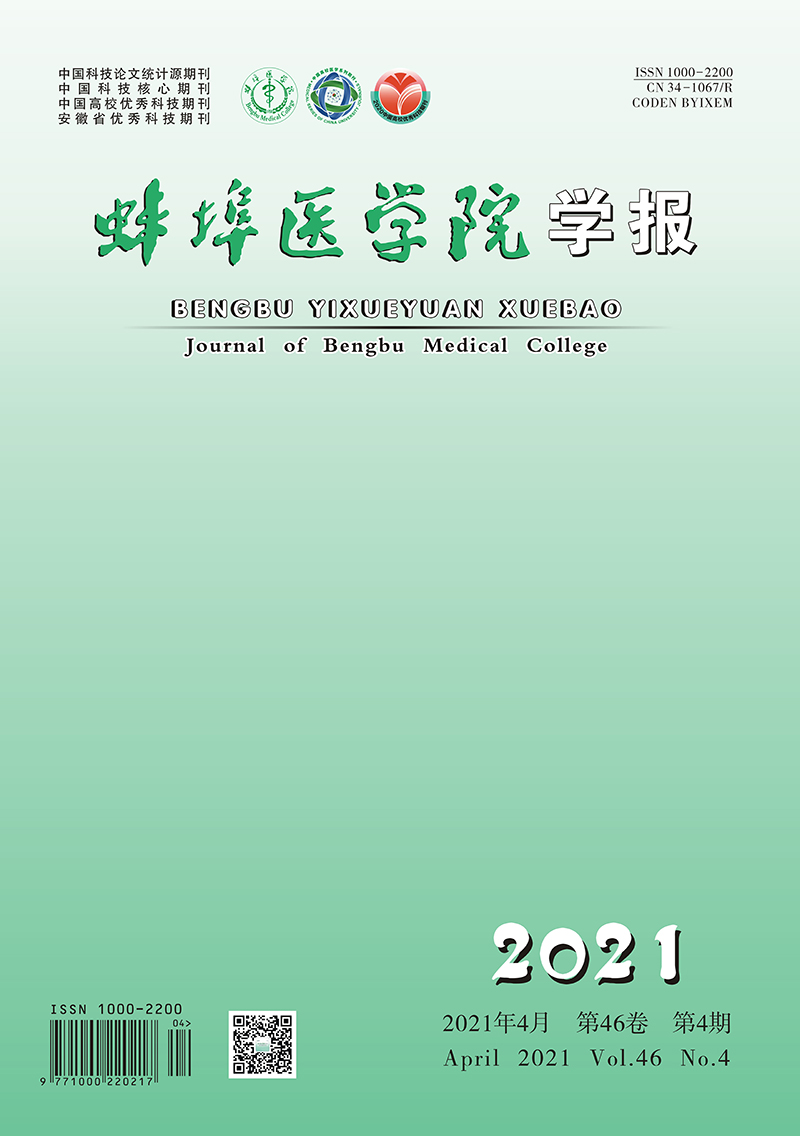-
当今社会创伤仍然是导致死亡的主要原因之一,死亡通常在受伤后的6 h内发生[1]。大量出血在短时间内导致病人血容量迅速丢失,病人很快进入休克状态,继而导致死亡。该过程是一个复杂的病理生理过程,其发病机制与细胞能量代谢、组织酸中毒、全身的炎症反应、凝血等有密切的关系,如果不予以及时干预,最终会导致机体多个器官及系统的异常改变甚至功能衰竭[2-3]。限制性液体复苏可以提高创伤失血性休克的成功率[4-9]。碳酸氢钠林格液作为一种新型晶体溶液,在有效地扩充血容量的同时还能够减轻组织损伤和组织细胞酸中毒。但关于碳酸氢钠林格液复苏对创伤失血性休克疗效的影响目前报道甚少。本研究采用碳酸氢钠林格液与乳酸钠林格液复苏创伤失血性休克病人,观察外周血细胞因子、动脉血乳酸、凝血功能等的差异,评估碳酸氢钠林格液对创伤失血性休克病人的复苏效果。现作报道。
HTML
-
本实验采用前瞻性对照研究,是一个平行对照盲法随机临床试验。选取2019年3月至2020年6月行限制性液体复苏治疗的成人创伤失血性休克病人48例,依照随机数字表法分为对照组(输注乳酸林格液组)24例,其中男13例,女11例,年龄22~65岁;观察组(输注碳酸氢钠林格液组)24例,其中男14例,女10例,年龄20~67岁;2组性别和年龄等一般资料均具有可比性。本研究已通过蚌埠医学院第一附属医学伦理委员会批准,并将相关情况详细告知病人家属,知情同意后自愿参与。
-
纳入标准:(1)符合最新的《创伤失血性休克诊治中国急诊专家共识》中失血性休克的诊断标准[10];(2)年龄≥18周岁;(3)病人在受创伤后6 h内入院;(4)同意参与研究者。排除标准:(1)入我院前经过特殊治疗的病人及入院后1 h内死亡的病人;(2)复苏30 min内达不到目标血压的病人;(3)血压控制不达标的高血压病人、肾功能不全病人以及凝血功能障碍者;(4)中、重度脑外伤病人;(5)入院后1 h内进行特殊治疗的病人。
-
基本处理:2组病人予以锁骨下静脉穿刺监测中心静脉压、动脉穿刺进行有创血液动力学监测以及心电监护、导尿等一般常规处理;定期送检外周血相关细胞因子、动脉血气分析、凝血功能等。对2组病人均行限制性复苏治疗。对照组应用乳酸林格液(安徽环球药业股份有限公司)进行复苏,观察组应用碳酸氢钠林格液(江苏恒瑞医药股份有限公司)进行复苏。通过控制液体输注的速度及液体量使2组病人的平均动脉压(MAP)在复苏30 min内达到65~70 mmHg[3],并维持至1 h,若达不到标准,则排出在外,顺延补充病例。
-
复苏前检测2组病人的一般资料,和创伤严重程度评分、血红蛋白、收缩压、舒张压等。采集2组病人复苏前、复苏1 h后外周静脉血和动脉血,检测外周静脉血小板计数(PLT)、血浆凝血酶原时间(PT)、纤维蛋白原(FIB)和动脉血乳酸。通过酶联免疫吸附实验法检测外周血清肿瘤坏死因子-α(TNF-α)、白细胞介素(IL)-4、IL-6、IL-10。
-
采用t检验。
1.1. 一般资料
1.2. 纳入和排除标准
1.3. 治疗方法
1.4. 观察指标
1.5. 统计学方法
-
2组病人复苏前一般资料比较差异均无统计学意义(P>0.05)(见表 1)。
分组 n 体质量/kg 年龄/岁 体温/℃ 呼吸/(次/分) 心率/(次/分) 观察组 24 66.75±7.53 44.13±15.05 36.02±0.53 24.06±1.74 128.84±3.99 对照组 24 64.66±8.27 48.19±8.27 36.22±0.48 23.41±1.62 130.57±4.18 t — 0.92 1.16* 1.37 1.34 1.47 P — >0.05 >0.05 >0.05 >0.05 >0.05 分组 n 收缩压/mmHg 舒张压/mmHg 创伤严重程度评分 血红蛋白/(g/L) 红细胞/(×1012/L) 观察组 24 71.77±3.92 43.73±2.87 25.51±3.02 78.37±4.75 2.89±0.39 对照组 24 72.68±5.38 44.62±3.11 24.24±2.64 79.26±5.22 2.95±0.56 t — 0.67 1.03 1.55 0.62 0.43 P — >0.05 >0.05 >0.05 >0.05 >0.05 *示t′值 -
复苏前2组病人血清IL-4、IL-6、IL-10、TNF-α比较差异均无统计学意义(P>0.05)。复苏1 h后,观察组除TNF-α,其余因子均较复苏前显著增高(P < 0.01),对照组只有IL-6和IL-10较复苏前显著增加(P < 0.01)。观察组复苏1 h后外周血细胞因子IL-4和IL-10水平高于对照组,IL-6和TNF-α低于对照组,差异均有统计学意义(P < 0.05)(见表 2)。
分组 n IL-4/pg/mL IL-6/pg/mL IL-10/pg/mL TNF-α/ng/mL 复苏前 观察组 24 5.65±1.19 25.40±4.48 22.84±3.19 11.30±2.30 对照组 24 5.58±1.20 25.28±5.36 22.93±2.61 11.42±1.66 t — 0.20 0.08 0.11 0.21 P — >0.05 >0.05 >0.05 >0.05 复苏1 h后 观察组 24 6.67±1.34** 29.21±4.65** 29.49±4.51** 11.82±2.34 对照组 24 5.86±1.19 32.91±6.61** 26.71±3.31** 13.36±2.52 t — 2.21 2.24 2.43 2.19 P — < 0.05 < 0.05 < 0.05 < 0.05 组内配对t检验:**P < 0.01 -
2组病人复苏前动脉血乳酸值、PLT、PT、FIB比较差异均无统计学意义(P>0.05),复苏后1 h后,观察组动脉血乳酸值显著低于对照组(P < 0.01),而PLT、PT、FIB比较差异无统计学意义(P>0.05)(见表 3)。
分组 n 乳酸/(mmol/L) PLT /(×109/L) PT/s FIB/(g/L) 复苏前 观察组 24 5.68±1.00 124.50±14.35 13.32±1.19 3.15±0.69 对照组 24 5.92±0.83 122.63±14.65 13.48±1.20 3.11±0.67 t — 0.90 0.45 0.46 0.20 P — >0.05 >0.05 >0.05 >0.05 复苏后1 h 观察组 24 3.86±0.76** 111±10.77** 14.51±0.87** 2.52±0.52** 对照组 24 5.23±0.86 109±13.44** 14.88±1.19** 2.56±0.53** t — 5.85 0.57 1.23 0.26 P — < 0.01 >0.05 >0.05 >0.05 组内配对t检验:**P < 0.01
2.1. 2组病人一般资料比较
2.2. 2组外周血炎症因子比较
2.3. 2组病人动脉血乳酸值、PLT、PT及FIB的比较
-
近年来相关研究[11]表明, 液体复苏是创伤失血性休克早期救治的关键,有效的液体复苏是病人后续治疗的重要保障,病人在进入急救中心后能够迅速得到救治,液体复苏和紧急术前准备多能在1 h内完成,继而可以进行下一步的手术等其他治疗,所以本研究选择复苏1 h为时间节点来研究。
创伤失血性休克与细胞因子之间存在着密切的联系,创伤失血可以引起细胞因子产生和释放增加,导致明显的炎症反应甚至炎症风暴[12], 并且炎症反应在液体复苏后仍可持续存在。这些细胞因子在休克过程中互相作用,对促使不可逆性休克的发生具有重要的病理意义[13]。相关动物实验[14]发现:输注乳酸钠林格液会促进中性粒细胞的氧化应激反应,它能促进IL-6、TNF-α等多种细胞因子的表达。这些细胞因子一般包含促炎和抗炎2个方面的相互作用,其中TNF-α和IL-6是促炎细胞因子的代表。而IL-4和IL-10是抑炎因子,它们能够抑制IL-6和TNF-α等促炎因子的分泌,对抗炎症反应。目前认为,这些炎症因子与创伤失血性休克的细胞功能障碍及组织损伤有密切的关系,其变化可作为预测休克危重程度的重要指标之一[15-17]。所以,本研究中通过检测病人复苏前后外周血清TNF-α、IL-6、IL-4、IL-10值的变化,来观察不同液体复苏后炎性介质的表达情况。结果显示,在复苏1 h后,2组炎性因子表达水平有一定差异,这说明碳酸氢钠林格液在减轻炎症反应方面比乳酸钠林格液具有更好的临床效果。
晶体液是早期复苏比较合适的液体,乳酸钠林格液是目前临床应用最广泛的平衡液。在发生创伤失血性休克时,机体短时间内会失去大量的细胞外液,导致各组织、器官灌注不足、组织缺血缺氧,会在短期内引起血乳酸水平增高[18]。在输入乳酸钠林格液时,乳酸根离子需要通过体内肝、肾的代谢才能发挥碱化作用[19]。因此机体在休克或者肝功能障碍时,乳酸会因为代谢障碍而发生积蓄。同时由于失血性休克血液里碱性物质的丢失,以及液体复苏时碱性物质进一步的稀释,都会加重酸中毒。而碳酸氢钠林格液是一种新型的林格液,目前已应用于临床,因为碳酸氢钠林格液中缓冲成分的碳酸氢根,是生物体血液中最常见的缓冲成分,所以在血液中不经过肝脏代谢直接进行碱化作用。这也可以减轻因为补液引起的稀释性酸中毒。本研究结果显示,2组病人复苏前动脉血乳酸比较差异无统计学意义(P>0.05),复苏后1 h,观察组乳酸值较对照组的乳酸值低(P < 0.01)。从数据分析结果可以看出碳酸氢钠林格液较乳酸钠林格液能够更好地减轻病人酸中毒的情况。
创伤性失血性休克因大量失血可导致血液中的血小板、凝血因子短时间内减少较多。另外液体复苏时不论是晶体液、胶体液及输血都可导致血小板及凝血因子稀释性减少。同时创伤可使凝血因子过度消耗以及休克状态下内环境改变可以导致血小板、凝血因子的功能异常以致严重的凝血功能障碍,甚至发生弥散性血管内凝血,迅速导致病人死亡[20-21]。本研究显示,复苏后1 h后,观察组与对照组外周血PLT、PT、FIB比较差异无统计学意义(P>0.05),说明2种液体对凝血功能的影响无明显不同。
综上所述,碳酸氢钠林格液对创伤失血性休克限制性复苏效果在对病人外周血细胞因子、乳酸影响明显优于乳酸钠林格液,更适合作为创伤休克病人复苏液体的选择。本研究的局限性:本研究病例总数相对较少;只观察了复苏后1 h内复苏效果的变化,由于病情不同而后续采取的治疗措施不同,例如后期需要相应药物治疗、输血、手术等,所以后期的研究可比性较低。因此,本研究尚需长期大样本的临床研究来进一步完善和验证。






 DownLoad:
DownLoad: